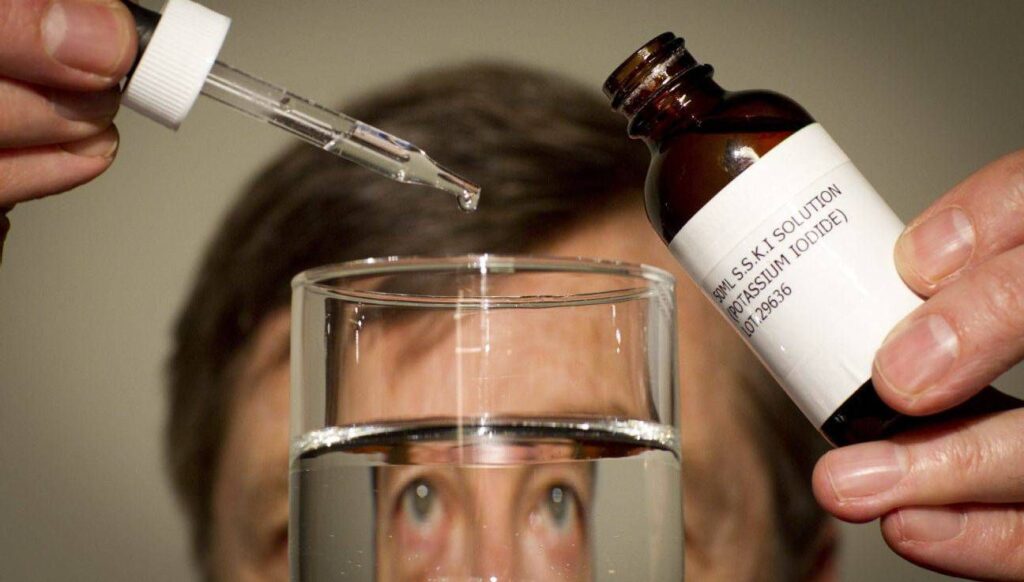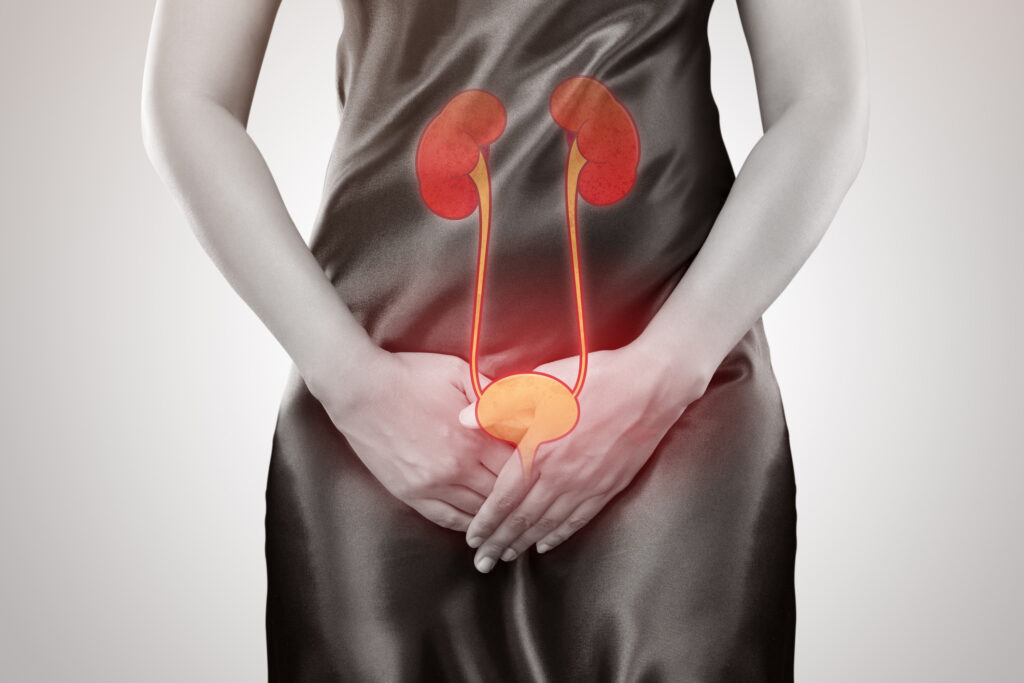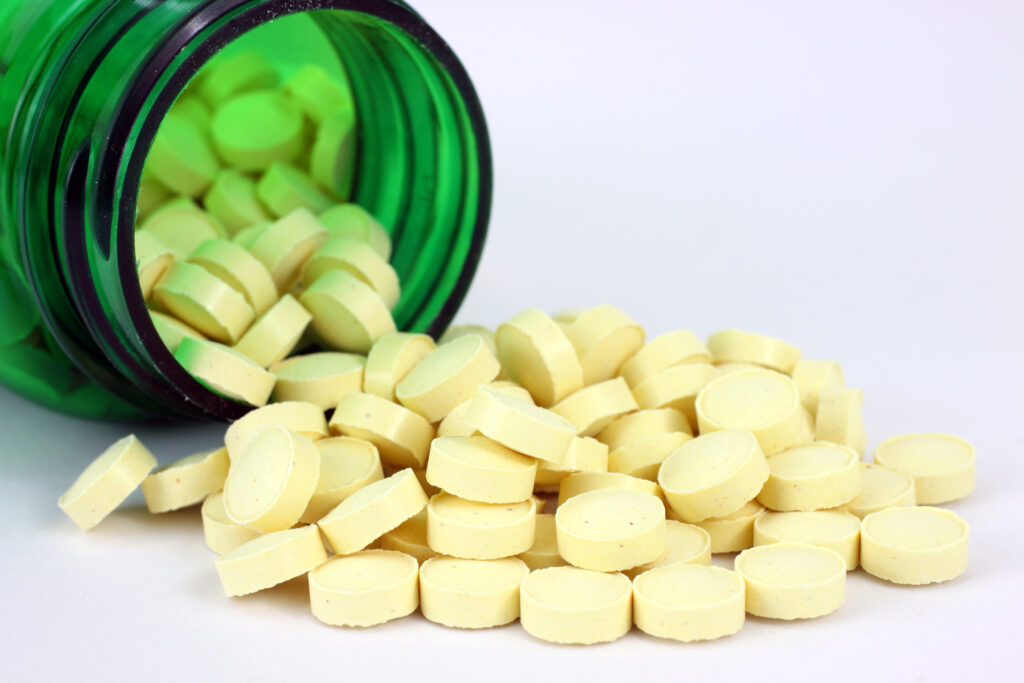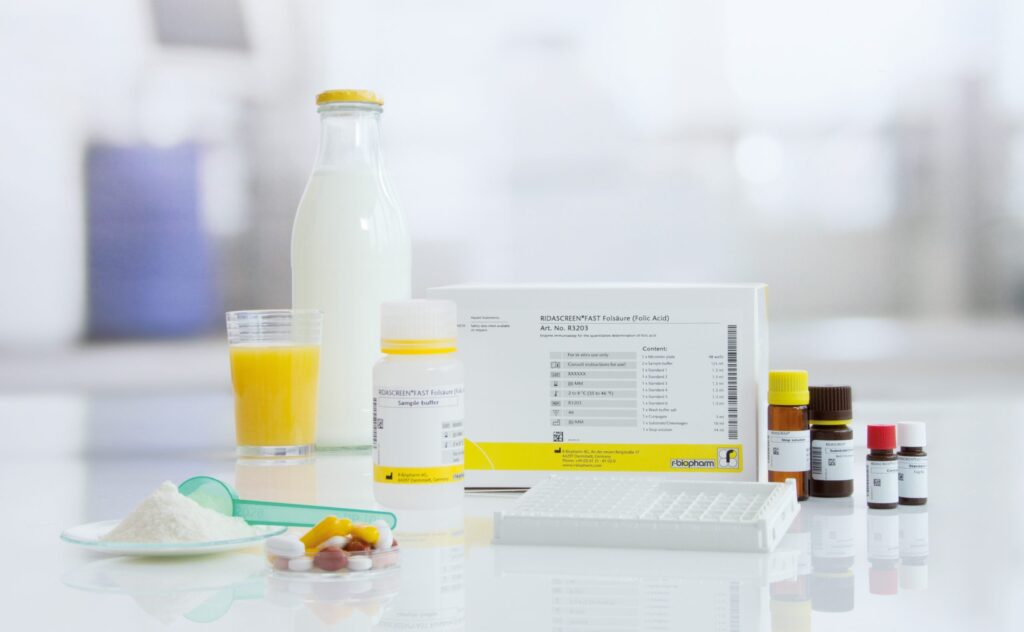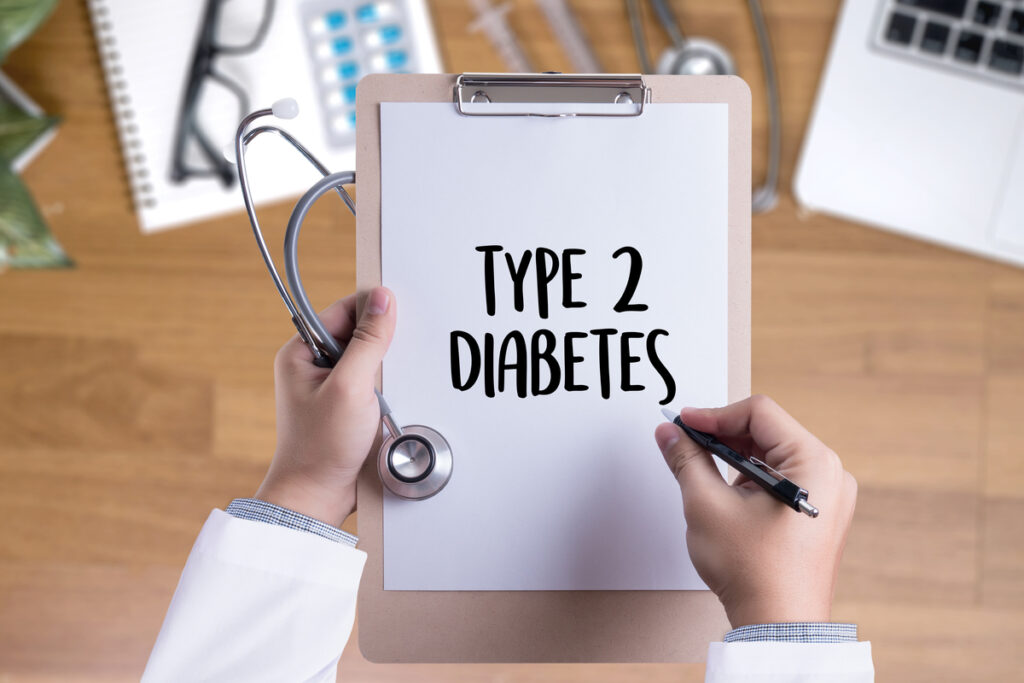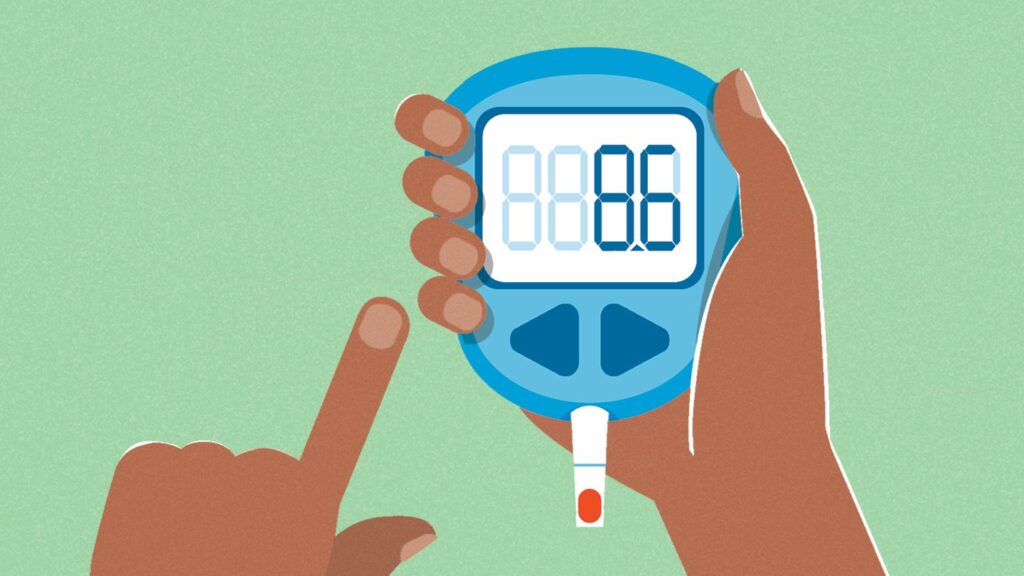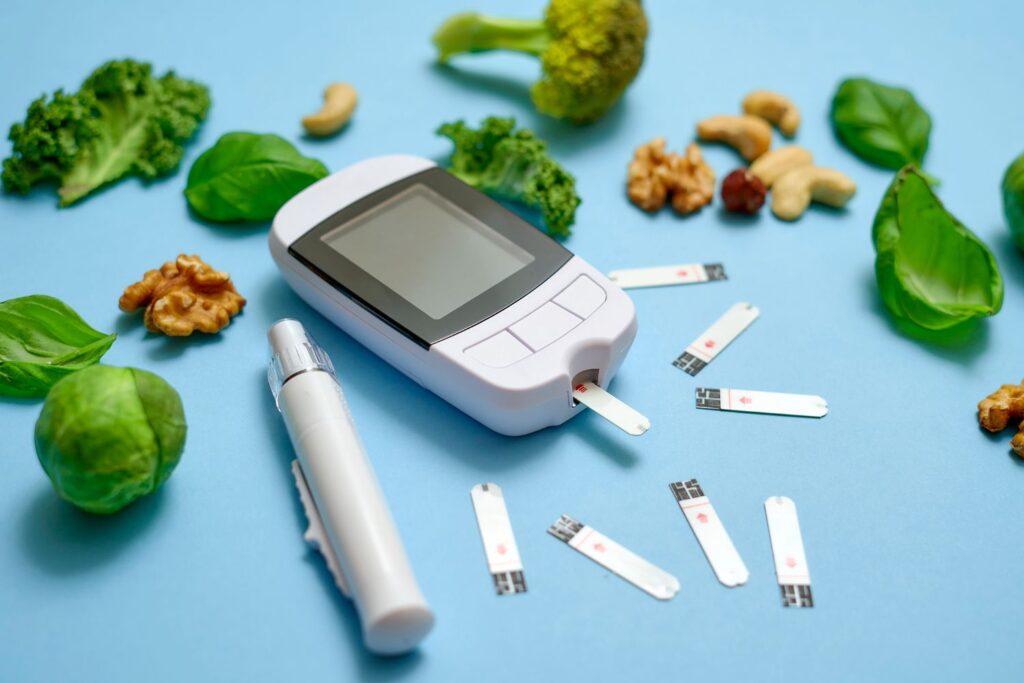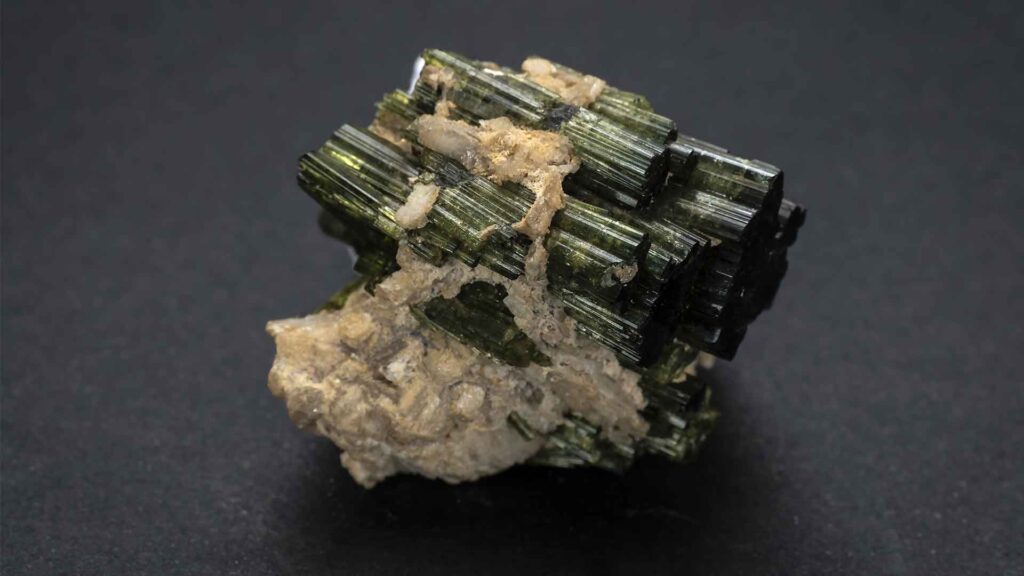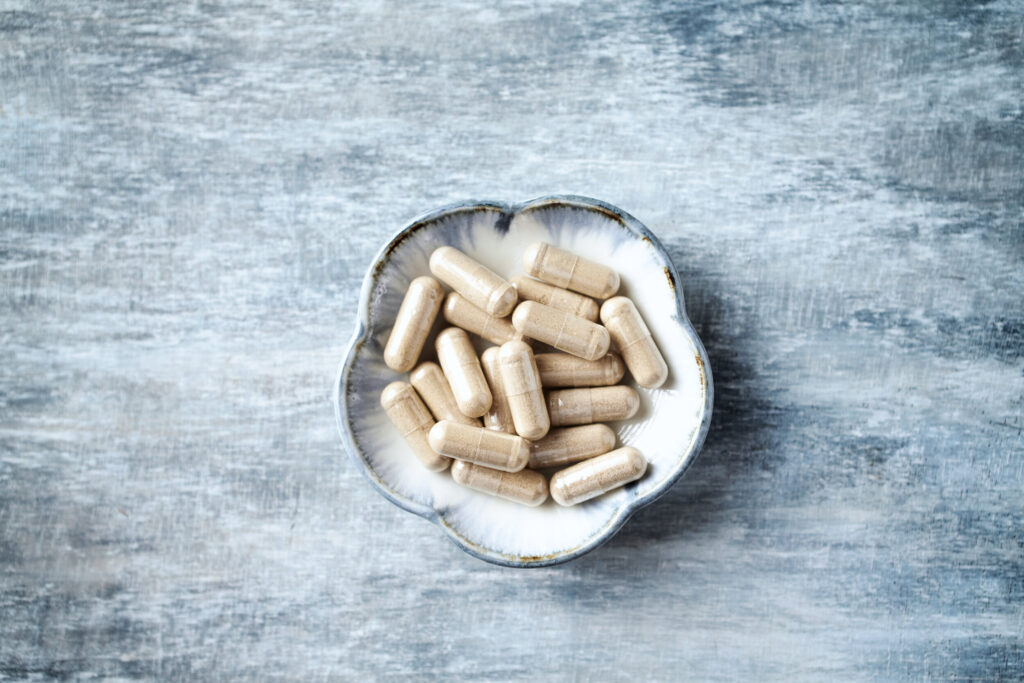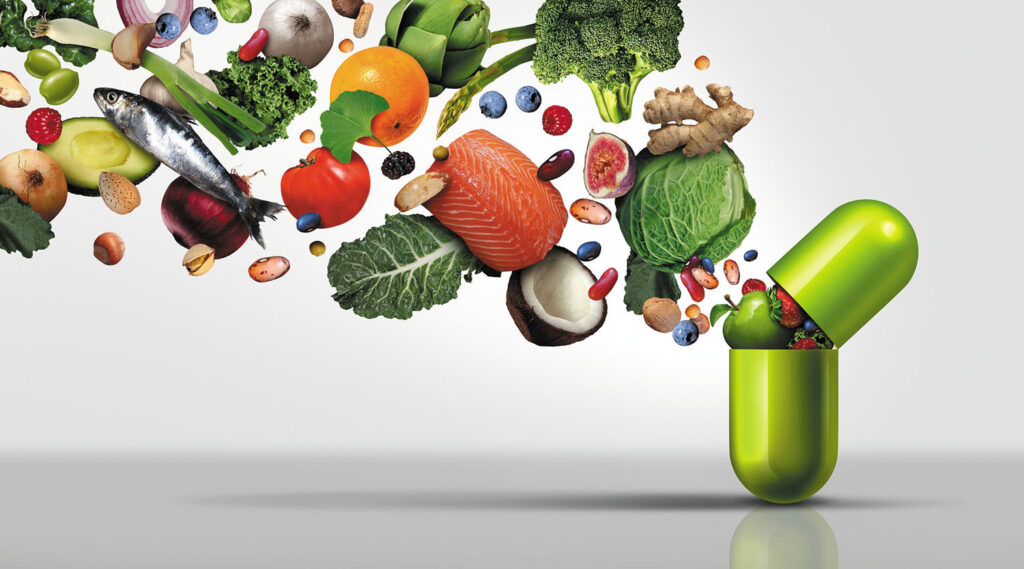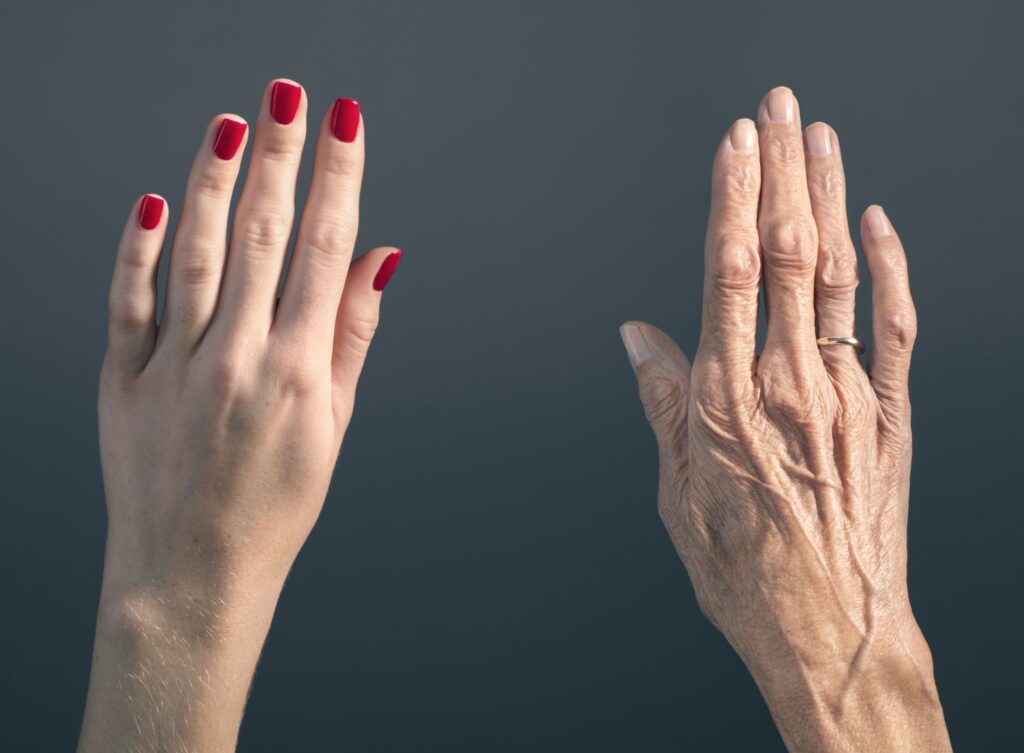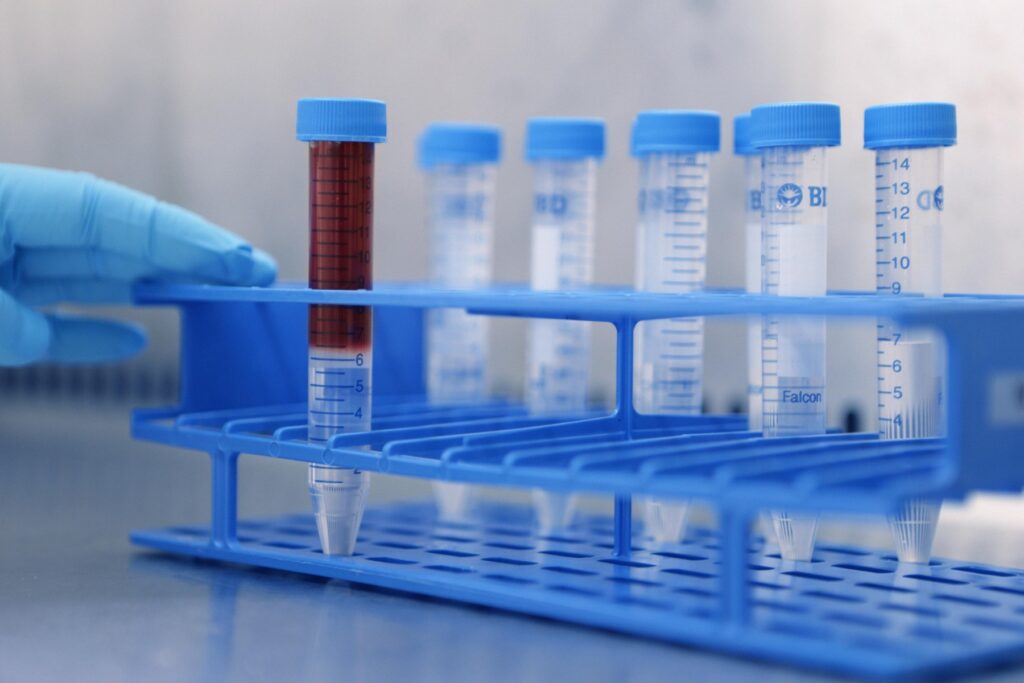If you’ve read or heard anything at all about potassium iodide, it’s probably been in association with terrorist attacks or nuclear power plant disasters. Potassium iodide (usually taken in tablet form) is recommended by “public health” authorities to protect the thyroid gland against accumulation of radioactive iodine released by a “terrorist bomb” or by nuclear power plant “meltdown”. But in reality, potassium iodide is a very effective “home remedy” with literally dozens of uses.
Older readers may remember Mother putting “iodine” on cuts and scrapes. It kept infection away as well as any “modern” antibiotic ointment, with the added benefit of not inducing “bacterial resistance”. But what else is potassium iodide (usually abbreviated by it’s Latin initials “SSKI”) good for? Read on…and then make sure to read the separate section about keeping SSKI use safe.
Some years ago, a retired Indian physician told me about his use of SSKI during more than 30 years traveling from village to village in rural Africa. Most usually, the only drinking water available was from a local stream or river, muddy and contaminated. After removing sediment and debris by straining the dirty water through cheesecloth, he’d add several drops of SSKI, and wait two to three minutes. He and his team could then drink the water. In over 30 years, he never got an infection from contaminated water. The SSKI killed any micro-organisms present.
Fortunately, the water available to most of us when traveling is considerably cleaner. Despite this, when Holly (my wife) and I travel, we always carry a small bottle of SSKI, and put one or two drops into any water we’re not absolutely certain about. We’ve cut back considerably on airline travel this year because of the thoroughly un-American and extremely unpleasant “airport Gestapo” experience. But when we’re forced to travel by air, we drink a few ounces of water with 10 drops of SSKI, and prevent any “airline sinusitis” or other respiratory infection that so often follows several hours spent breathing re-cycled, germ laden air. (SSKI rapidly accumulates in any and all body secretions, including in the sinuses, where it inhibits or kills bacteria, viruses, and fungi before they can cause an infection.)
See Also: Cataract Surgery Sydney

Although Holly has never had the experience, occasionally another woman at one of the conferences we attend has developed a bladder infection when far away from home and her own physician. Holly gives her our “back-up” small bottle of SSKI with instructions to take 10 to 15 drops in water or juice every 3 to 4 hours (while awake) until the infection is gone.
[Although SSKI is close to 100% effective in the elimination of bladder infections, this is a “high dose”; make sure to read the section “Keeping SSKI safe”. If possible, it’s best to use the simple sugar D-mannose to eliminate bladder infections. D-mannose is effective over 90% of the time, and is very, very safe. For details, see D-mannose and Bladder Infection by Lane Lenard Ph.D. and me, available through the Tahoma Clinic Dispensary.]
When our children were teenagers, they always knew where to find the SSKI bottle. Whenever one of them “popped a zit”, she or he would rub SSKI into it every hour or two. The offending “zit” would be gone in 24-48 hours or less; an innumerable number of social events were rendered “zit-free” by this approach.
So far, I’ve been telling you about SSKI’s ability to “kill germs” in one place or another. We’ll return to this important “home remedy” use for SSKI, but let’s digress for now to other uses.
Many women develop “fibrocystic breast disease”. In the 1970s, I learned from pioneering trace element researcher Dr. John Myers that iodine (a close “relative” of SSKI) would eliminate even the most severe cases of fibrocystic breast disease. [For the full details of this treatment, see pages 169-174 of The Patient’s Book of Natural Healing by Alan Gaby M.D. and me.] In “medium” to “minor” cases, 6 to 8 drops of SSKI taken in a few ounces of water daily will frequently reduce fibrocystic breast disease to insignificance within three to six months. Please do not do this without monitoring your thyroid function…see “Keeping SSKI Safe” on page whatever.
One of our daughters and at least thirty other women I’ve worked with in nearly 30 years have helped ovarian cysts disappear within two to three months with the same quantity of SSKI. Again, make sure to monitor your thyroid function!
It’s very likely that SSKI helps eliminate fibrocystic breast disease and ovarian cysts at least partly through it’s interaction with estrogens….which brings us to another important use for SSKI (and other forms of iodine such as “Lugol’s solution” and “di-atomic iodine”). All of these forms of iodine help your body to metabolize estrone (a slightly carcinogenic human estrogen) and 16-alpha-hydroxyestrone (a much more dangerous metabolite of human estrogen) into estriol, an “anti-carcinogenic” or at worst “neutral” form of human estrogen. I’ve reviewed literally hundreds of hormone tests in over 26 years which have proven this point. This testing and treatment usually requires the help of a physician skilled and knowledgeable in nutritional and natural medicine, who can also help with monitoring thyroid function.
“Dupuytren’s contracture” and “Peyronie’s disease” are two “fibrotic” conditions that can be helped considerably by SSKI. In Dupuytren’s contracture, thickening (fibrosis) occurs along one of the tendons in the palm in the hand, pulling the related finger down towards the palm. As the problem progresses, the finger often can’t be straightened any more.
In Peyronie’s disease, a very similar thickening occurs along the shaft of the penis, making erections increasing “curved” and painful. In both cases, rubbing SSKI into the thickened tissue at least twice daily softens and lessens the fibrotic area over a period of several months, allowing for more normal function.
For these conditions, it’s additionally helpful to take para-aminobenzoic acid (PABA) 2 grams, three times daily, and to rub a mixture of Vitamin E and DMSO into the thickened areas, also. However, if “caught early”, SSKI alone will often “do the job”. (It’s also advisable to have glucose-insulin tolerance test done, as there’s an unusually high incidence of “insulin resistance” in people with Dupuytren’s contracture or Peyronie’s disease.
“Keloids” are abnormally thick scars, sometimes as much as an inch thick, that can form after injury. Although anyone can get a keloid, they’re more common among blacks than other ethnic groups. Rubbing SSKI into a keloid at least twice daily will ultimately flatten them down to a “normal scar”, but it can take many months to a year for particularly bad ones. The treatment goes faster if SSKI is mixed “50-50″ with DMSO.
“Fistulas” are literally abnormal tunnels through tissues, “tunnels” prevented from healing by chronic infection. Two not-unusual types are “peri-anal fistulas” (a “tunnel” from outside the anus to the inside of the rectum) and “recto-vaginal” fistulas. Although these fistulas can be treated successfully by surgery, they can often be healed by frequent swabbing inside and out with an SSKI-soaked “Q-tip”. Patience is required: Complete healing often takes several months. The treatment appears to work better if the SSKI is mixed with DMSO, which enhances “penetrance”. My colleague Richard Kunin, M.D. of San Francisco, is a “world class” expert on the use of SSKI and other forms of iodine. He has found that hemorrhoids will sometimes disappear literally overnight, when SSKI (20 drops) mixed with flaxseed oil (1 ounce) is rubbed in them at bedtime. He’s also found that SSKI alone will do the same job, although it “really stings” when applied to a hemorrhoid by itself.
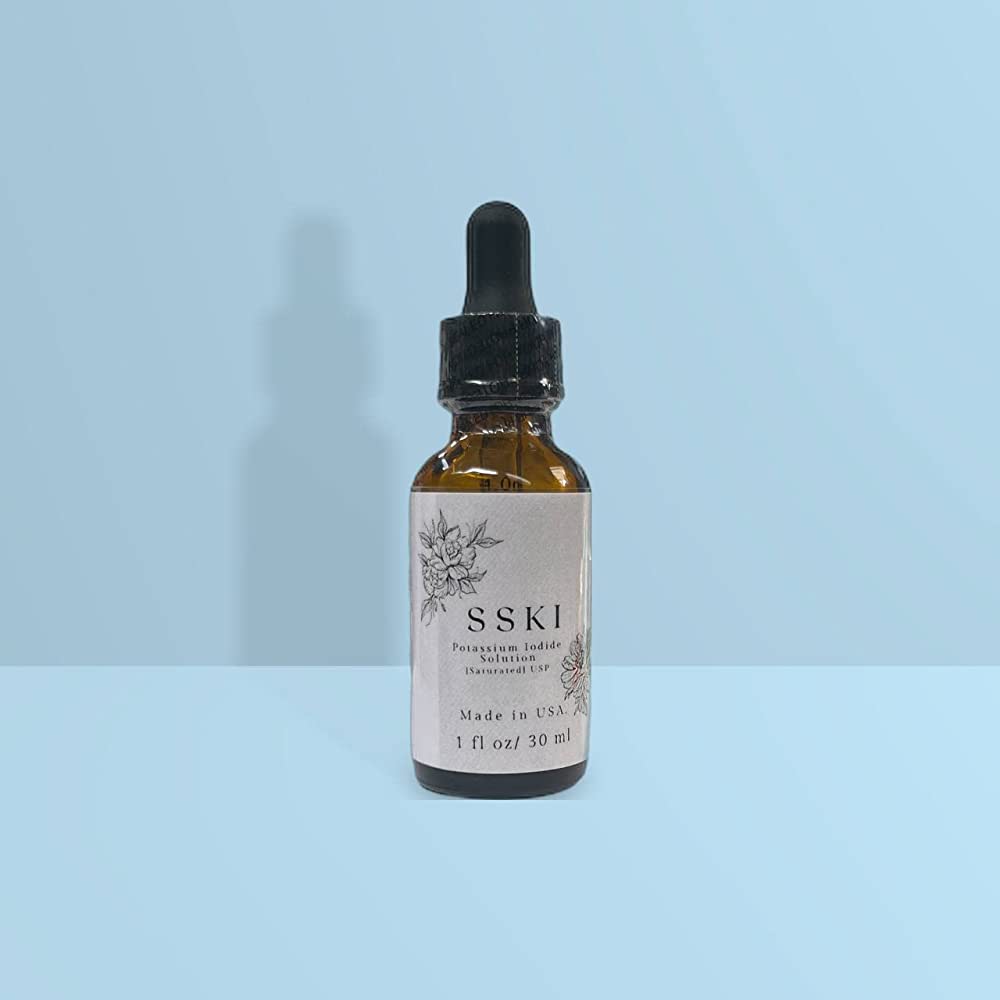
When I was a pre-med student at Harvard University, the famous chemistry professor Louis Feiser made a point of demonstrating to all the pre-medical students that iodine and iodide would make oils, fats, and waxes (cholesterol is actually a wax) more soluble in water. He urged us to remember this in our medical practices, as he was sure it wouldn’t be taught in medical school (he was right!). This known action of iodide likely explains why SSKI can be useful in the next two applications.
Over 30 years ago, two ophthalmologists observed that a combination tablet called “Iodo-niacin” (iodide 120 milligrams, niacin 15 milligrams) taken for several months could actually reverse atherosclerotic clogging of arteries. They proved this effect by taking pictures of clogged arteries in the backs of the eyes (“retinal photomicrographs”) before and after treatment. The published photographs showed a significant lessening of the cholesterol-laden artery clogging in the “after” pictures.
Amazingly enough, no follow-up study has ever been published (probably because niacin and iodide aren’t patentable). Despite this, the published pictures speak clearly for themselves. I recommend 4 to 6 drops of SSKI and niacin-containing B-complex daily (along with many other things) for anyone with significant cholesterol-related atherosclerotic clogging. Thyroid function must be monitored!
“Sebaceous cysts” are cysts which contain oily, fatty material. They usually appear rather suddenly on the face or in the groin or labia. Rubbing in SSKI mixed 50-50 with DMSO will almost always persuade these cysts to go away in a week or two; it appears that the iodide “dissolves” the fatty, oily material contained in the cysts, allowing your body to slowly re-absorb and dispose of it.
Although it’s not a common condition, from time to time someone will come to my office at Tahoma Clinic inquiring about alternatives to surgery for “parotid duct stone”. These are “stones” which can form in the saliva-carrying duct(s) from the major salivary glands (“parotid” glands, located at the “angle of the jaw”). 3 to 4 drops of SSKI taken in water daily will almost always dissolve parotid duct stones within four to eight months.
If you have chronic bronchitis and or emphysema (“COPD”, “COLD”) SSKI is an invaluable tool. SSKI “gets into” all body secretions, including often thick and hard to cough up bronchial secretions, which get infected very easily. SSKI takes care of both of these problems. It “loosens” secretions remarkably, making them much easier to “clear”, and it prevents micro-organisms from growing easily. With regular SSKI use, bronchial infection is a much less frequent happening. Depending on the severity of COPD, I recommend 3 to 6 drops of SSKI taken in water once daily. As COPD is usually a chronic condition, SSKI use will usually be indefinite, so make sure to monitor your thyroid function! (See the August 2002 Nutrition & Healing for a more complete discussion of natural COPD treatment.)
Now, back to other infections. For this group, using SSKI mixed “50-50″ with DMSO works better, as the DMSO enables SSKI to penetrate much more deeply into the tissues and kill germs.
Infected “hangnails” are perhaps the easiest to clear up this way, as are nagging bacterial infections around the edges of the toenails. Rub in the mixture several times daily, and the problem’s usually gone in a few days. Herpes simplex (“herpes”) ourbreaks can be “stopped cold” in the same way, but it often takes longer for the “sore” to heal itself over.
If you have persistent “swollen glands” in the throat or groin areas, see a doctor first! These can very rarely be signs of leukemia, lymphoma, or another cancer, especially in older people. But if all tests and studies are negative, and the doctor says “it’s just swollen glands”, rub in the SSKI with DMSO. In a large majority of cases, the “just swollen glands” will gradually fade away.
Fungus under the toenails (“onychomycosis”) is a difficult problem to treat. Even “conventional” anti-fungal drug treatment takes months to work, and (for safety) monthly liver function tests are necessary. SSKI and DMSO rubbed on, around, and under the affected toenails doesn’t work any faster, but it’s just as effective, and definitely safer. Make sure to wear old socks, because SSKI and other forms of iodine leave an orange-brown stain. (Other safe and effective alternatives include geranium oil, oregano oil, and tea tree oil. These and other anti-fungal oils also require “help” from DMSO to penetrate the toenail and soak the fungus underneath.)
SSKI can also help clear up vaginal infections. 20 to 30 drops in water, used in a small “douche” once daily for five to ten days will usually do the job. (There’s actually a prescription-only iodine preparation of available for vaginal infections, too.) However, iodine preparations of any sort for vaginal infections are often not popular because of the inevitable orange-brown stains they leave on clothing.
What about SSKI to help a “weak” thyroid (hypothyroidism)? Even though iodine and iodide are absolutely essential to thyroid hormone formation, in most “developed” countries, hypothyroid conditions are not usually due to an outright lack of iodine or iodide. Still, hypothyroidism is occasionally helped by 1 drop of SSKI daily. Make sure to work with your doctor on this one!
Lastly, there’s a gastronomic use for SSKI: reducing the gas we all get from eating beans! If you’re soaking beans before cooking them, add 1 or 2 drops of SSKI, and let them soak for an hour or more. (Pour offf that water before cooking, and add fresh water.) You’ll be surprised at the reduction in resulting intestinal gas! (For those who want a technical explanation: There’s a naturally occurring enzyme inhibitor in beans which interferes with starch digestion, producing gas. SSKI inactivates this enzyme inhibitor.)
OBTAINING SSKI
In the past, SSKI and other forms of iodine and iodide were available only on prescription, or through chemical supply sources. Since the mid-1990s passage of the Federal DSHEA law, we’ve regained the basic American freedom to buy and sell natural substances (narcotics exempted) without prescription. You haven’t read or heard much about SSKI because (despite Federal Appeals Court decisions) FDA still maintains it’s First Amendment violating policy of complete suppression of truthful product use information on package labels or in advertisements….unless of course FDA is paid an enormous amount of money ($250 million minimum, according to Congressional testimony) for “approval”. Since SSKI can’t be patented…well, you know the rest.
SSKI can be obtained without prescription in some compounding pharmacies, some health food stores, through “on-line” sources, and at the Tahoma Clinic Dispensary (with which I am of course affiliated) in a convenient travel-size dropper bottle.
USE SSKI SAFELY!!
There are three “hazards” to using SSKI: staining, allergy, and a very small possibility of thyroid suppression with longer-term use of “too much”.
Staining can be a big nuisance, but it’s not a health hazard. When SSKI is applied to skin, it can impart a faint to moderate orange-brown color, which fades away once SSKI is no longer being applied. SSKI and other iodine stains in clothing can be semi-permanent or permanent, so don’t plan to wear anything “nice” in the vicinity of recently-applied SSKI.
Iodine allergy is a possibility, although in nearly 30 years of medical practice I’ve seen it only a few times. Usually, it causes a red, bumpy skin rash, which goes away after SSKI or other iodine is discontinued. Topical (applied to the skin surface) iodine allergy is almost never a serious emergency.
SSKI or iodine can very occasionally cause acne, which also goes away once the source of iodine is dicontinued.
The type of so-called “iodine allergy” that can interfere with breathing and occasionally sends us to the emergency room is usually not allergy to iodine or iodine molecules, but instead to much larger, possibly iodine-containing molecules found in lobster, crab, clams and other “shellfish”. These molecules are not present in SSKI or iodine. However, if there’s any suspicion at all of iodine allergy, it’s best not to swallow any without testing for allergy or sensitivity.
Too much iodine for too long can suppress thyroid function. Many of the uses described for SSKI in the accompanying article are short-term, from a few days or less to a week or two. If SSKI is then stopped, there’s almost no chance of significant thyroid suppression. However, if SSKI is to be used for two to three weeks or longer, and especially if it’s to be used continuously (for example, COPD or cholesterol-related atherosclerosis) monitoring thyroid function is very important. To find a physician near you who can help order and interpret thyroid function tests contact Meridian Valley Lab.
Fortunately, in my experience with over a thousand individuals, internal use of than nine drops of SSKI daily has or less has very rarely resulted in thyroid suppression. On those very few occasions, discontinuance has resulted in prompt recovery. So far, I’ve never seen thyroid suppression result from “topical” (skin surface) use of SSKI.
A final “safety” note: Dr. Kunin cautions (and I agree) that if you use SSKI or other iodine “long-term”, make sure your diet contains plenty of essential fatty acids (both omega-3 and omega-6) as well as the sulfur-containing amino acids methionine and cysteine. If you eat animal protein daily, that’s usually sufficient as a source of these two amino acids, but if you’re vegetarian (or close) and using “long term” SSKI or other iodine, then take 300-500 milligrams of each daily.
IODINE, IODIDE, WHAT’S THE DIFFERENCE?
Iodine is a basic element, as are calcium, zinc, oxygen and other elements. The word “iodine” usually refers to two iodine molecules chemically “stuck together” (I2), just as the word “oxygen” usually refers to two oxygen molecules “stuck together” (O2). Since iodine is more reactive, and therefore more likely to cause problems, iodine is usually used as “iodide”, a word which refers to one iodine molecule combined with another molecule such as potassium (KI) or sodium (NaI). In chemical terms, such molecules are called “salts”; the best known salt is sodium chloride (NaCl), a “salt” of chlorine (Cl2).
The “SS” in “SSKI” refers to “Saturated Solution Potassium Iodide”. Other medically useful forms of iodine include “Lugol’s solution”, invented by Dr. Lugol of Paris in the 1840s, which contains a mixture of types of iodine and iodide, and “di-atomic iodine”, which is another name for iodine, but usually prepared as a solid in a capsule instead of a liquid.
More to read: Common Questions About Diabetes and Eye Surgery: Sydney Eye Clinic

